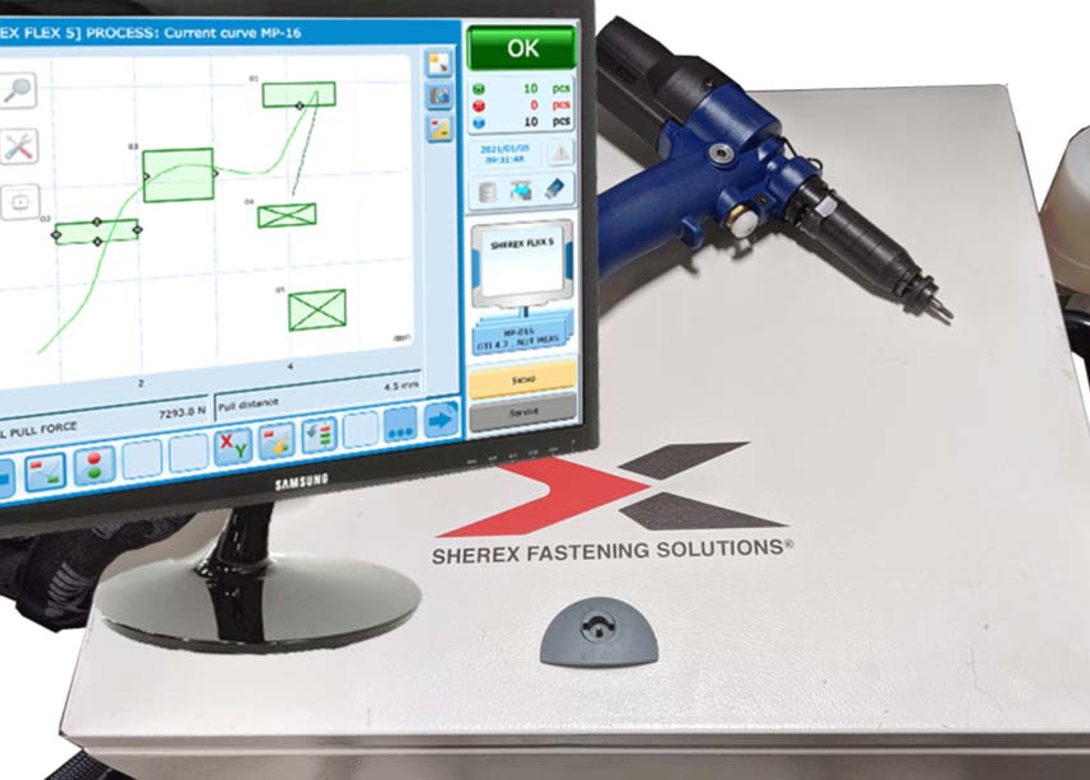
Deciding on what fastener to use on an assembly takes a lot of time and effort. Here Sherex Fastening Solutions looks at what issues can arise when installing fasteners at a high volume and why process monitoring is more important than ever.
When it comes to selecting a fastener engineers need to firstly analyse what type of fastener will provide the proper strength and grip to secure joints, and then combine it with the right tooling to make installations efficient. These processes take a lot of time and effort to determine the best fit for a product, and that doesn’t even factor in the investment in purchasing fasteners, tooling and calibration units.
So, when it comes to the actual installation of the fastener on to the assembly, and after putting in all the work to find the correct product and tooling, the installation has to be perfect. Unfortunately, this isn’t always the case.
When installing fasteners at a high volume, anything from human error, tooling issues, improper hole sizes, or material thickness variations, may occur from time to time. These improper installations could lead to bigger problems down the road. Not only could it lead to safety concerns, but also to material waste, rework, and other expensive delays that cost manufacturers valuable time and money.
This is why process monitoring is so important. Having a process monitoring installation system in place lets the operator/installer know if their fastener installation is satisfactory or not. With a system that’s configured to the specific part that’s being installed, along with the thickness of the base material it’s being installed into, these systems determine the results of an installation instantaneously. Add in the historical analysis of the installations that are occurring, and installations are driven by quantifiable data, not just by user feel. These systems even support a ‘stop tool’ function to allow operators to analyse or reinstall the part if installation wasn’t satisfactory.
Process monitoring systems are required in a number of industries including automotive, and they’re becoming more popular. The ROI on a process monitoring system compared to the time and waste of incorrectly installed items, or even potential litigation from an installation that wasn’t perfect, could pay for itself relatively quickly. These systems can be used in low or high volume installations, including on an assembly line.
With installations being so critical to the assembly of any product, the risk of not knowing if an installation is proper is not worth saving a few bucks, especially if a worse case scenario happens, whatever that may be. Process monitoring systems combines quality control and efficiency so installers can feel good when the assemblies keep moving down the line.

Having spent a decade in the fastener industry experiencing every facet – from steel mills, fastener manufacturers, wholesalers, distributors, as well as machinery builders and plating + coating companies, Claire has developed an in-depth knowledge of all things fasteners.
Alongside visiting numerous companies, exhibitions and conferences around the world, Claire has also interviewed high profile figures – focusing on key topics impacting the sector and making sure readers stay up to date with the latest developments within the industry.
Don't have an account? Sign Up
Signing up to Fastener + Fixing Magazine enables you to manage your account details.